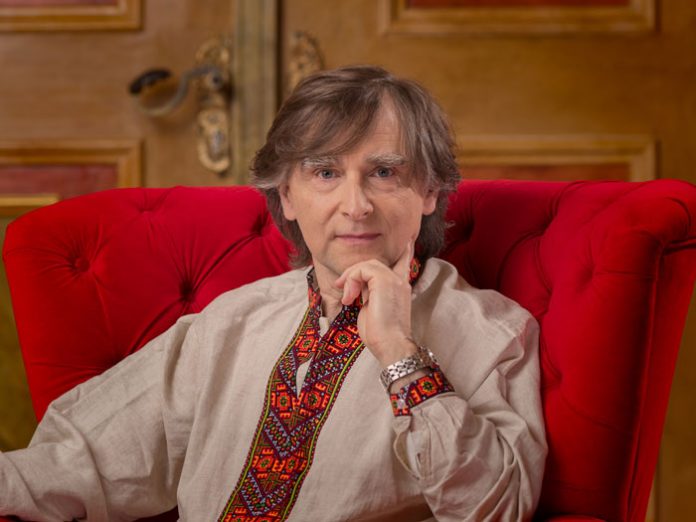This is not my first conversation with the Polish scholar Marcin Wodzinski. In 2013, following the release of his book on chasidism and politics, he visited my office together with the well-known askan Reb Duvid Singer. Today as then, my conversation with him elicits paradoxical emotions. His knowledge of chasidism, particularly its roots and subsequent development, is shockingly broad. In fact, many chasidim turn to him for information about their origins, and Professor Wodzinski’s research has saved for posterity much of that history.
Of course, the mere fact that chasidism, a vibrant Jewish movement that once thrived in Eastern Europe and Russia, has been reduced to a scholarly discipline for a Polish academician is saddening. Poland was once the center of chasidic and Jewish life in general, but it now has very few Jews living there. And it goes without saying that Poland is devoid of any vibrant Jewish culture.
“That loss,” he tells me, “is very acutely felt in Poland on many levels. One significant expression of this is the Museum of the History of Polish Jews in Warsaw. I was its head historian for some time, as well as the chief designer of the gallery that depicts the 19th century. Three years after its opening, it is now the most successful museum in Poland.”
Unfortunately, it hurts to hear that, because that is precisely what Hitler was trying to accomplish. The Nazis wanted to reduce Jews and Judaism to relics and artifacts found only in a museum, and I tell the sympathetic professor as much.
“That’s true, but I would say that Poland as a country can’t do anything about it because there are so few Jews living there. But in terms of recognizing the tragedy and the loss and as an expression of pain, this museum is extremely important. And there are many other examples of how the non-Jewish community is trying to integrate an understanding of Jewish culture into what it means to be Polish today. There are at least four centers of academic Jewish studies in the country, which is the same number that exists in Israel. Each center has many scholars who are doing valuable research and earning PhDs in the subject. These schools attract people who want to study Jewish history and culture. Many of them write important articles and books that are read by a lot of Poles.
“The Jews are not an extinct race,” he says with fervor, “and this notion among Poles is even stronger today than it was 50 and 100 years ago, when Polish culture was very antagonistic towards Jews and sought to exclude them. Today, an increasing number of people realize that you can’t understand Poland without understanding the Jews.”
Field of Study
Marcin hails from a town in Poland that is 50 kilometers away from Breslau, or Wrocław as it is known in Polish, which before the Holocaust was the epicenter of the haskalah, rather than chasidism. Yet ironically, it was the chasidic movement that drew his interest.
“Of course. There weren’t any chasidim here. The city of Wrocław is best-known for the Beit Midrash l’Rabbanim, which was part of the so-called Conservative movement. Abraham Geiger, who one of the leaders of the Reform movement, was also quite active in Wrocław for over two decades. And the Jewish historian Heinrich Groetz spent his entire academic life at its university,” he tells me when I confide in him that given his place of birth and alma mater (he also attended the University of Wrocław), I find his interest in chasidism rather peculiar. “But there were also some important chasidic books that were published in Wrocław, such as the first edition of Kol Simchah, which is the collected teachings of Rav Simchah Bunim of Peshischa.”
“So you’re a goy,” I tease him, “born in the birthplace of the maskilim, but chasidism became your field of interest.”
“That’s right!” he replies good-naturedly. “I’m trying to bridge ideas and interests. My interest in Jewish history and culture began with Jewish cemeteries, which was very typical at the time because it was the most visible presence of both the Jewish presence and absence in Poland in the 1980s. I learned Hebrew so I could write down the inscriptions, and I was fascinated by seeing the rebirth of chasidic pilgrimages to the gravesites of tzaddikim in Lizhensk, Peshischa, Lublin and other places. Then I started researching chasidic life, which is what I’ve been involved in for the past three decades.
“Two weeks ago I published a book called An Historical Atlas of Hasidism, which is going to be very important for chasidic studies. It contains 280 pages of full-color maps and images from the inception of chasidism until today. The maps present an entirely new way of understanding the movement, and there are a lot of previously unknown historical images. The book was published by the prestigious Princeton University Press.
“I also recently published a book entitled Hasidism: Key Questions. That one was printed by Oxford University Press. That is the volume of which I am the most proud, as it summarizes my entire investigation into chasidism. It has seven chapters, each of which addresses a different central question: the definition of chasidus, women in chasidism, chasidic leadership and the role of a tzaddik, the demographics of chasidim historically and today, the geography of where they lived, the economics of chasidic life, and finally, the end of chasidus in Eastern Europe and how it moved to the United States and Israel. I put forth the argument that this shift was not only because of World War II but actually started during the First World War. The book has around 350 pages.”
“What do you think you’ve added to the understanding of chasidus?” I ask.
“There are several things that are unique about my work. First of all, I am equally interested in the lives of the rank-and-file chasidim as I am in the lives of the tzaddikim. To me, a tzaddik isn’t a leader if he doesn’t have followers. That is why I believe that much of the research so far has been misguided by omitting the tzaddik’s thousands of followers from the picture. I think it’s critically important to understand not only the teachings of the great chasidic minds but also—and perhaps more so—to understand how they reached the simple folk and affected their lives. Another innovation in my work is that I don’t just delve into intellectual topics. I also look at the social, economic and other aspects of history, which are aspects that have only been properly addressed by very few scholars. This results in an entirely different perspective.





















